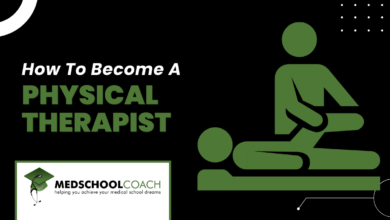Whether you’re just starting your clinical years in medical school or you’ve finally graduated and are on your way to residency, boards is something we all have to face. For osteopathic students and graduates, the COMLEX presents a unique challenge due to the OMM section. The NBOME takes OMM seriously, with OMM comprising a significant portion of the exam. Mastering OMM is a must for any serious examiner, which can seem overwhelming on top of everything else you have to know. Fortunately, this can be done with a relatively short amount of studying if you know how to approach it. In fact, you really only need to nail a few topics to comfortably pass, and a little extra effort will have you crushing the OMM questions. Here, I will present a few high-yield strategies to help you manipulate the somatic-dysfunction-heck out of the COMLEX.
Step 1 – Budget Your Time
If you are taking the USMLE as well as the COMLEX, I actually recommend taking the USMLE first, and then dedicating the last few days before the COMLEX to pure OMM study. This ensures you cover all the topics for the USMLE. If you are good for the USMLE on those subjects, you will also be good for the COMLEX. A few days is more than long enough to get OMM down while the other topics are fresh.
Step 2 – Read Savarese
This is THE number one OMM review. It provides a rapid but comprehensive overview. It is actually quite short and can easily be read in less than a day. Do this at the start of your OMM study period. If you have recently reviewed the material in this book, you will be gold for the COMLEX. Order one from Barnes & Noble for around 30$ and keep it through Level III.
Step 3 – Know Your Autonomics
If I could only study one OMM subject, it would be autonomics. For an unknown reason, the COMLEX examiners dedicate an unusually large proportion to viscero-somatic reflexes. If you know these, you will get a solid percentage of your OMM questions. This is good news because you can memorize it all in only a few minutes. Draw the following table out until you can do it without looking:
Do this again a few times the evening and morning before the test, and then quickly write it out first thing on the “scratch paper” they give you. That way you won’t get tripped up on any questions.
Step 4 – Ribs, Ribs, Ribs
Who doesn’t love ribs, right? Well, the COMLEX writers definitely do. Use this to your advantage. Know the difference between pump handle and bucket handle motions (and which ribs they correspond to), how to diagnose and treat the two main dysfunctions (inhaled and exhaled), and the muscle groups that are engaged to treat each segment of ribs. This will get you a nice rack of points on test day.
Step 5 – Sacrum and Cranial
The cranio-sacral motions are paramount to OMM practitioners. Regardless of whether you have ever felt the cranial rhythms, if you know the basic physiology, anatomy, diagnoses, and treatments, you will be happy on test day. Review these sections in Savarese a few extra times.
Step 6 – Chapman’s Points
Chapman’s points are easy, well, points. However, you don’t need to memorize all the Chapman’s points out there. The key is to recognize the outliers. For instance, I guarantee you will get a question about the appendix being at rib 12. Other high yield points are prostate, colon, adrenals, kidney, and bladder. There may be an odd one or two otherwise, but these are the big ones.
If you follow my advice, you will do well on the OMM portion of the COMLEX. That will guarantee you a solid percentage of the exam. Just take a deep breath, get in touch with your respiratory cycles, and good luck!



